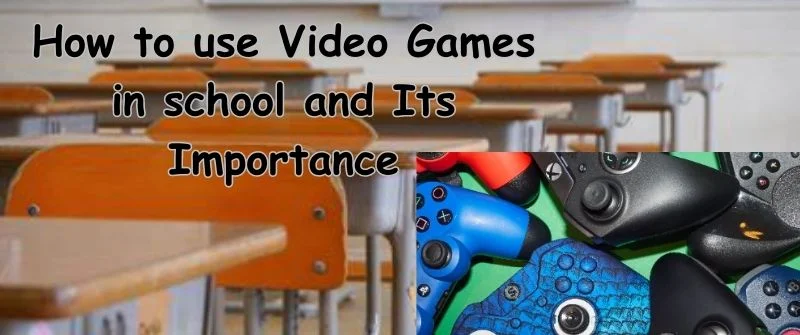In today’s fast-paced digital world, harnessing the potential of video games is an educational game-changer. Beyond mere entertainment, integrating games in schools cultivates critical thinking and problem-solving skills and boosts engagement.
Discover 14 innovative ways to embrace gaming and revolutionize learning for the better!”
1. To Enhance the Learning Experience through Gamification
First, it integrates educational content into games to engage students and promote skill development and knowledge retention.
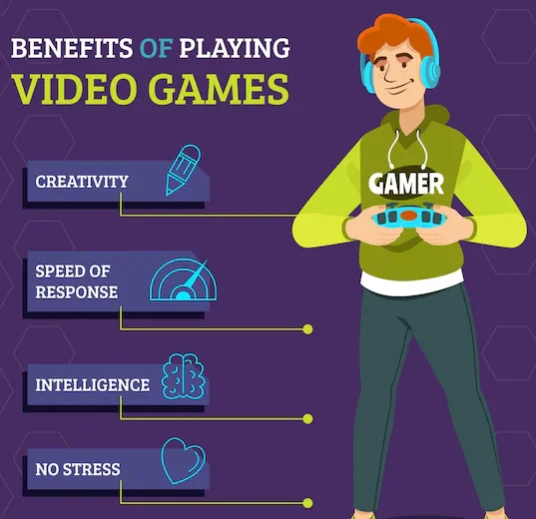
Second, it transforms traditional curricula with game elements like points and rewards, fostering healthy competition and deeper subject understanding.
Thirdly, it enhances the teacher-student relationship. The gaming interactions create a positive learning atmosphere.
Lastly, it explores how game mechanics trigger intrinsic motivation, curiosity, and a growth mindset, leading to improved learning outcomes and positive attitudes toward education.
These approaches empower educators to create dynamic, interactive, and effective learning environments that resonate with students’ interests and optimize their learning potential.
2. Cognitive Benefits of Video Games in Education
Video games in education offer numerous cognitive benefits, propelling students toward academic success and personal growth. Firstly, they enhance problem-solving skills by presenting intricate challenges that need creative and strategic thinking to overcome.
As students navigate complex virtual worlds, they develop critical thinking abilities, analyze situations, and make precise decisions.
Additionally, video games boost memory and recall capabilities as players must remember rules, codes, and in-game information.
These cognitive advantages result from the interactive nature of gaming, stimulating the brain’s cognitive functions and fostering an enjoyable and practical learning experience beyond the classroom.
3. Fostering Creativity and Imagination
Video games support storytelling by fostering interactive gaming where users actively shape the story. Students can test their creative abilities by creating and recreating worlds, characters, and scenarios within the virtual environment.
They can freely express themselves and experiment with ideas thanks to the creative aspects of gaming. Additionally, video games frequently feature excellent art and design, encouraging students to value and produce visually appealing content.
Teachers may engage students’ imaginations and help them develop as creative thinkers and problem solvers in both the digital and physical worlds by embracing the creative potential of video games.
4. Developing Technological Proficiency
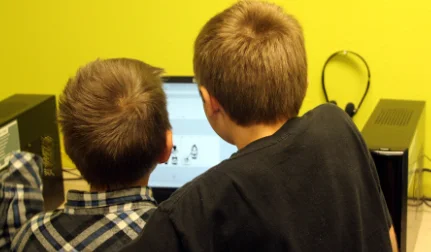
Video games in the classroom are crucial for helping pupils become technologically literate.
Students who interact with digital surroundings become skilled at utilizing sophisticated interfaces and learning various digital technologies.
Playing and evaluating various games naturally leads to understanding game design and mechanics, providing insights into user experience and interface design.
In addition to improving kids’ digital literacy, technology exposure gives them the practical skills they need to succeed in today’s technologically advanced society.
5. To Promoting Collaborative Learning
Using video games can be a potent technique for encouraging student group learning. As players work together to accomplish shared goals in multiplayer games in the school, this fosters cooperation and communication between players. They gain valuable communication, planning, and coordination skills through cooperative gaming.
Cooperative gaming in project-based learning, where students collaborate to complete tasks and solve problems, is another potential made possible by video games.
Additionally, group dynamics in gaming scenarios mimic actual life circumstances, preparing students for future cooperative projects.
Teachers can develop a cooperative learning environment that fosters social skills, empathy, and the capacity to get along with others by incorporating multiplayer and cooperative gaming.
6. Helps in Building Resilience and Perseverance
Students’ resilience and perseverance can be strengthened with video games in the classroom. They learn essential resilience lessons while playing video games since they face many difficulties and fail.
Still, because video games are participatory, they help pupils adopt a growth mentality, where problems are seen as growth opportunities rather than hurdles. They discover how to keep trying and adjust their tactics until they succeed.
Problem-solving, time management, and strategic thinking, among other life lessons learned from gaming, are transferrable talents that go beyond the virtual world and equip students to take on real-world difficulties with courage and drive.
7. To Cultivate Cultural and Historical Awareness
Educational games that place a high priority on historical accuracy provide immersive learning opportunities that let students study and comprehend different historical eras and events.
Additionally, video games can be practical tools for examining cultures and showing different practices, traditions, and viewpoints. Students learn empathy for others and a broader understanding of cultural variety by participating in these virtual worlds.
Video games have a greater impact on cultural understanding than textbooks because they offer students a memorable and interactive approach to learning about the world’s rich history and promote global consciousness among the next generation of learners.
8. To Enhance Attention Span and Focus
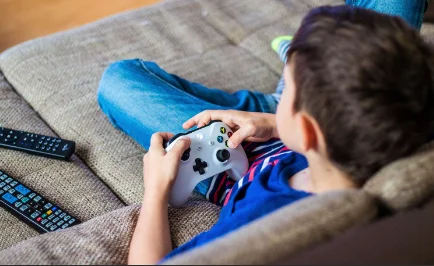
Playing some video games requires quick thinking and continuous focus, which helps with attention.
Teachers can use gaming to create lessons that improve students’ focus.
They can encourage concentrated participation by including timed challenges and challenging riddles.
To get the best results, screen time must be moderated. To avoid potentially harmful consequences, it’s essential to balance gaming and other activities.
When used thoughtfully, video games can help kids develop their attention skills and help them stay focused and interested in academic and real-world situations.
9. Helps Personalize Learning through Adaptive Games
Through adaptive games, educational video games offer tailored learning. Games offer a personalized learning experience by adapting instructional information to each student’s needs, interests, and learning preferences.
Real-time evaluation of student progress and learning outcomes using educational games enables teachers to pinpoint students’ strengths and areas for development.
The data-driven insights obtained from gaming activities assist instructors in making defensible choices regarding curriculum adaptation to suit each student’s particular needs.
With the help of adaptive games, students can advance at their own rate, receive individualized coaching, and feel accomplished, leading to a deeper comprehension of the subject.
Education is revolutionized by this tailored method, which makes sure that each student may succeed and realize their full potential.
10. Encourage Physical Activity and Health
Video games in the classroom can motivate children to move more and improve their health. Exergaming, a combination of gaming and physical activity, provides dynamic and interesting ways to get students moving while having fun.
These video games encourage kids to be active and remain in shape by incorporating physical activities like dance or sports.
Additionally, video games can be made to encourage healthy habits by rewarding physical accomplishments or including information on nutrition and well-being.
Striking a balance between gaming and physical health is crucial, so they take breaks, participate in outside activities, and lead healthy lifestyles.
Teachers can create a holistic learning environment that fosters mental and physical growth by using video games to encourage physical activity.
11. To Addresses Social and Emotional Learning (SEL) Needs
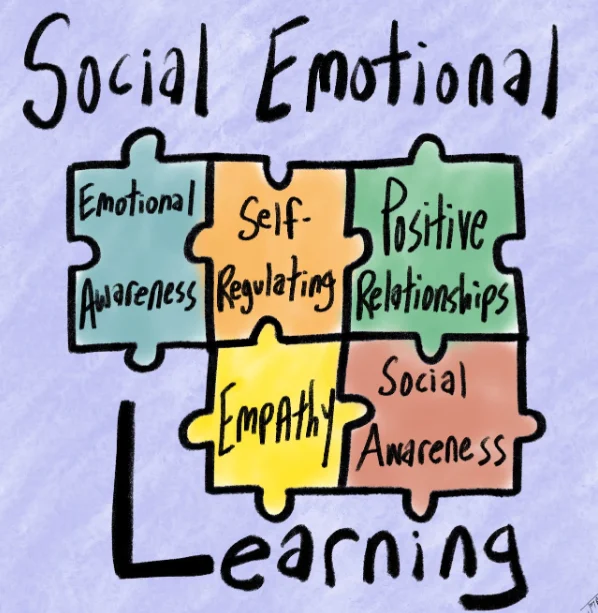
Another benefit of using video games in the classroom is that can help children with their social and emotional learning (SEL) needs.
Players often have to manage the characters’ emotions in video games and make decisions that impact the plot.
Students learn to know and regulate their emotions and develop empathy for others through dealing with conflict and emotions in video games.
By including particular lessons and discussions about emotions, communication, and relationship-building in video game education, educators can further improve SEL.
This method equips students to handle real-life social problems with more awareness and sensitivity by encouraging self-awareness, social competence, and responsible decision-making.
Educators can foster a supportive and emotionally intelligent learning environment that supports students’ overall well-being and personal development by utilizing video games to promote SEL.
12. Helps Overcome Stereotypes and Misconceptions
Video games that challenge gender norms expose pupils to many inspiring character representations, promoting equality and inclusivity. They present a variety of storylines and encourage understanding of many cultures.
Gaming can also combat racial and cultural prejudices. A more welcoming and open-minded generation is created by embracing video games for diversity and representation, which also helps to break down boundaries and promote empathy.
Students learn to challenge preconceptions and adopt a more inclusive worldview as they interact with varied characters and opinions.
13. Games give Real-World Simulations for Practical Learning
Games provide realistic simulations for hands-on learning, particularly when used with simulators in career training. In virtual environments, students can use their knowledge and abilities while obtaining practical experience without any negative effects.
Students gain more confidence and competence to handle real-life situations by fully engaging in these simulations.
14. Helps Balance Entertainment and Education
Video games in education strike a balance between fun and learning. In order to properly engage pupils, it is essential to comprehend the entertainment value of video games.
Teachers can easily include educational components into games without sacrificing enjoyment, ensuring that learning is still pleasurable.
With the development of technology and the emergence of fresh pedagogical strategies, the future of educational gaming is quite promising.
A new generation of enthusiastic, informed, and motivated learners can be fostered by utilizing the power of entertainment in educational games, which can continue to pique students’ interests and transform the learning environment.
Conclusion
Finally, using video games’ educational potential gives up opportunities for reshaping educational experiences. Video games have many positive effects, from stimulating cognitive development to encouraging teamwork and cultural understanding.
Teachers may ignite students’ enthusiasm for learning and develop vital skills for the future by effectively integrating gaming into curricula.
Adopting this dynamic and interesting method guarantees that learning becomes an exciting journey that leads students to succeed in both their academic achievements and life outside the classroom.
